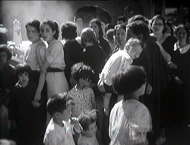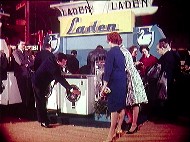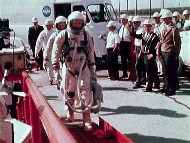    |
Pathé Journal Since 1896, Pathé has devoted itself to newsworthy events, providing both live broadcasts and reconstructions of such past events as the Russian Revolution and the Dreyfus Affair. It was not until 1909 that Pathé Journal - or PJ - was founded, a new genre that was much admired and universally imitated. PJ worked with its subsidiaries abroad to bring its viewers a snapshot of world events. Pathé cameramen travelled the world to shoot never-before-seen images, and captured the first ever world-scale war on film with the Service Cinématographique des Armées (the film division of France's armed forces). The post-war period brought heroes, new fashions, daring technical innovation and progress to the silver screen: Charles Lindbergh's solo transatlantic flight earned worldwide media coverage, a feat in itself. In the 1930s, Pathé sent its cameramen to the front lines to capture striking scenes from the Ethiopian War and the Spanish Civil War on film. From 1940 to 1942, Pathé produced newsreels for broadcast in the unoccupied south of France, in association with Gaumont. Images from the Pathé Journal de Marseille provide a rare glimpse of Vichy France's collaboration with the occupying forces. Pathé Journal produced its first post-war edition in January 1946. Maintaining its now recognizable rooster emblem, the newsreel strengthened its editorial policy, disregarding minor stories such as the laying of flowers and local news and instead focusing on major topics handled in a more "newsmagazine" style. Pathé Magazine came to the screens in the mid-1960s. As the number of television viewers grew, newsreels fell progressively out of favour. In April 1975, Gaumont and Pathé collaborated on their last joint venture, Gaumont Pathé Magazine, but the project stalled after only a few months, and Pathé Cinéma withdrew from the title in January 1976. In 1981, the cameramen shelved their equipment for good.
|